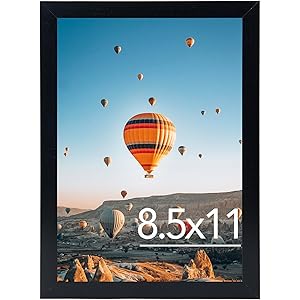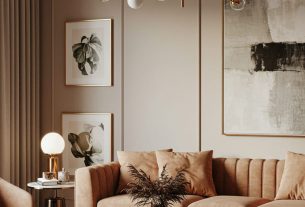When I first considered a career in interior design, I was both excited and apprehensive. Would it be fulfilling? Would I be able to make a decent living? As I delved deeper into the world of design, I discovered not just the aesthetic appeal of the profession but also the myriad benefits that accompany it. In this article, I will share my insights, experiences, and research on whether interior design is a good career choice for you.
The Allure of Interior Design
Interior design has always captivated me—not just as a profession but as a form of art. The ability to transform a space, to breathe life into four walls, is an exhilarating thought. According to the Bureau of Labor Statistics, employment in the interior design field is projected to grow by 5% from 2020 to 2030, which is about as fast as the average for all occupations. This growth signals a robust demand for skilled designers who can create functional and aesthetically pleasing environments.
Benefits of a Career in Interior Design
Choosing interior design as a career path comes with numerous advantages. Here are some of the most compelling benefits I’ve discovered:
- Creative Expression: Interior design allows me to express my creativity while solving real-world problems. Every project is a unique puzzle that requires innovative thinking.
- Job Satisfaction: Transforming a space and witnessing a client’s joy is incredibly rewarding. Many designers report high levels of job satisfaction because they see the tangible results of their work.
- Diverse Opportunities: The field is not limited to residential projects. I have the option to work in commercial spaces, hospitality, healthcare, and retail, which keeps my work diverse and exciting.
- Flexibility: Many interior designers enjoy flexible work hours. Whether working remotely or freelancing, I have the ability to create a schedule that works for me.
- Networking: The industry is filled with opportunities to connect with other creative professionals, from architects to contractors, which can lead to collaborative projects and career advancement.
Skills Needed for Success
While the benefits are enticing, a successful career in interior design requires a specific skill set. Here are some essential skills I’ve found invaluable:
- Creativity: A strong sense of aesthetics and the ability to think outside the box are crucial.
- Attention to Detail: Small details can make or break a design. I’ve learned to scrutinize every element to ensure a cohesive look.
- Technical Skills: Proficiency in design software such as AutoCAD, SketchUp, and Adobe Creative Suite is essential for modern designers.
- Communication: Being able to communicate ideas effectively to clients and colleagues is vital for project success.
- Project Management: Balancing budgets, timelines, and resources requires strong organizational skills.
Education and Qualifications
To become an interior designer, a formal education is often a prerequisite. Many professionals pursue a bachelor’s degree in interior design or a related field. Programs typically cover topics such as:
- Design Principles
- Color Theory
- Space Planning
- Materials and Textiles
- Building Codes and Regulations
In addition to educational qualifications, obtaining certification or licensing may be required, depending on your location. The National Council for Interior Design Qualification (NCIDQ) offers a widely recognized credential that demonstrates a designer’s proficiency and adherence to industry standards.
Real-Life Case Studies
To illustrate the impact of interior design, let’s consider a few case studies that exemplify the profession’s power:
Case Study 1: Residential Transformation
A couple purchased a run-down property in a desirable neighborhood. They hired a designer to reimagine the space. By focusing on open floor plans, modern kitchen design, and eco-friendly materials, the designer not only enhanced the home’s aesthetic appeal but also increased its market value by 30%. The couple reported feeling more at home and connected to their surroundings than ever before.
Case Study 2: Commercial Space Revitalization
A local coffee shop was struggling to attract customers. The owner enlisted the help of an interior designer who transformed the space into a cozy, inviting atmosphere. By using warm lighting, comfortable seating, and local artwork, the shop saw a 50% increase in foot traffic within three months. The owner credited the redesign for revitalizing the business.
Challenges of the Profession
While interior design has many benefits, it’s not without its challenges. Here are some hurdles I have encountered:
- Client Expectations: Managing client expectations can be tricky. Sometimes clients have unrealistic ideas, and it’s my job to guide them toward feasible options.
- Market Competition: The field is competitive, and standing out requires continuous learning and networking.
- Time Management: Balancing multiple projects can be overwhelming, especially when deadlines are tight.
- Budget Constraints: Working within a budget can limit creativity and necessitate compromises.
The Financial Aspect: Is it Lucrative?
Financial stability is an important consideration when choosing a career. According to the U.S. Bureau of Labor Statistics, the median annual wage for interior designers was approximately $60,340 in May 2020. However, earnings can vary widely based on factors such as:
- Experience Level
- Type of Employment (self-employed vs. employed)
- Geographic Location
- Specialization (residential vs. commercial)
Experienced designers in metropolitan areas often earn significantly more than those in rural settings. Additionally, those who specialize in commercial design tend to have higher earning potential.
Future Outlook for Interior Designers
The future of interior design appears promising. With an increased focus on sustainable design and the rising popularity of remote work, there is a growing demand for professionals who can create functional and aesthetically pleasing spaces. Trends such as biophilic design, which incorporates nature into built environments, are gaining traction and present exciting opportunities for innovation.
How to Get Started in Interior Design
If you’re considering a career in interior design, here are some actionable steps to get started:
- Research: Explore different areas of specialization and identify what excites you.
- Education: Look into accredited programs that align with your career goals.
- Internships: Gain hands-on experience through internships or entry-level positions to build your portfolio.
- Networking: Attend industry events and connect with professionals on platforms like LinkedIn.
- Stay Updated: Keep abreast of design trends, tools, and technologies through continuous education.
Conclusion: Is Interior Design the Right Career for You?
In conclusion, a career in interior design can be incredibly rewarding, offering a blend of creativity, problem-solving, and the satisfaction of transforming spaces. While it comes with challenges, the skills I’ve developed and the opportunities I’ve encountered have made the journey worthwhile. If you have a passion for design and a desire to make a difference in people’s lives through your work, I encourage you to explore this vibrant field further.
Frequently Asked Questions
1. What education do I need to become an interior designer?
A bachelor’s degree in interior design or a related field is typically required. Additionally, certification may be necessary depending on your location.
2. Do I need to be good at drawing to become an interior designer?
While drawing skills can be helpful, many designers use software tools to create designs. Strong visualization skills are more important.
3. How can I find a job in interior design?
Networking, internships, and building a strong portfolio are key strategies for finding job opportunities in the field.
4. What are some trends in interior design right now?
Current trends include sustainable design, biophilic elements, multi-functional spaces, and the use of bold colors and textures.
If you found this article helpful and insightful, I encourage you to sign up for our newsletter for more tips and trends in interior design. Don’t forget to share this article with friends and on social media!
JCJMY 8.5x11 inch Picture Frame Black for Certificate Poster and Photo, Horizontal and Vertical Formats for Wall Hanging or Tabletop, 8.5x11 Frame with Shatter Resistant Plexiglass, Black
$5.99 (as of 30/03/2025 01:25 GMT -03:00 - More infoProduct prices and availability are accurate as of the date/time indicated and are subject to change. Any price and availability information displayed on [relevant Amazon Site(s), as applicable] at the time of purchase will apply to the purchase of this product.)
Sign up for our newsletter and stay up to date with exclusive news
that can transform your routine!




